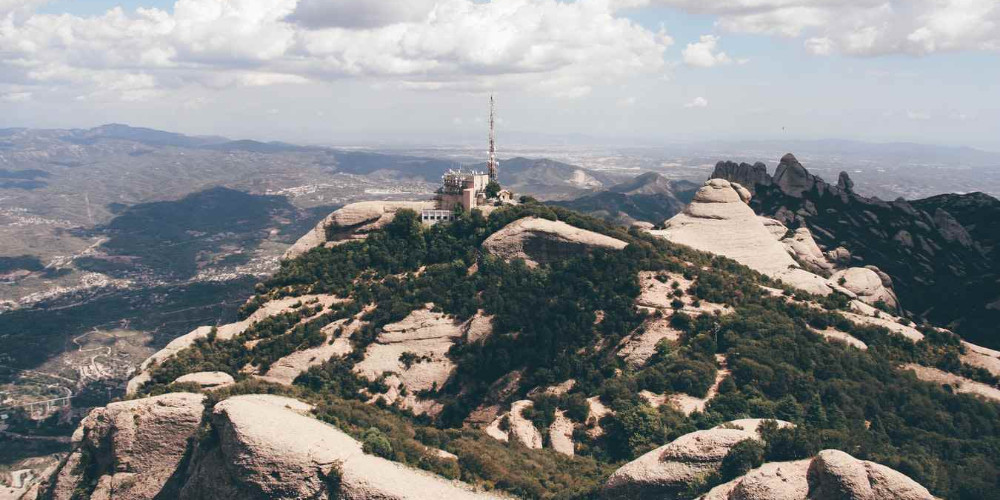
Are you planning to travel to Montserrat? Do you know where Montserrat is or how to get Montserrat? If not, we will tell you why you should visit Montserrat and more about where is Montserrat.
In the Caribbean Sea, there is an island that hides a great mystery. Montserrat's island, hidden in the Lesser Antilles, is a British overseas territory thanks to the centuries of colonial history that it carries behind it. Therefore, the Montserrat flags resemble the British. There are many places of interest in Montserrat, such as the Montserrat volcano, nice beaches, and several wonderful places to eat. You can travel to Montserrat at any time you want because there is always summer here. The best time to visit Montserrat is from February to May when there are too few hurricanes, and the weather is dry.
How to get to Montserrat? Probably the best way to visit Montserrat is by airlines, but you can choose ferry or cruise sailing under the Montserrat flags. In this blog, you will read about the reasons why you should visit Montserrat. Moreover, you will find answers to your questions, such as where is Montserrat, how to get to Montserrat, how to visit Montserrat, what is the best way to visit Montserrat, what is the best time to visit Montserrat, what are the natural places to visit in Montserrat, what are the nicest places of interest in Montserrat, what are the best places to eat in Montserrat, what do the Montserrat flags look like, is the Montserrat volcano dangerous, etc.
Turquoise waters and idyllic beach

The island has landscapes worth visiting on your travel to Montserrat since it is one of the most exuberant and attractive tropical islands in the world due to its beaches. Despite experiencing curious historical and climatological episodes, this island stands as a paradisiacal environment where you can enjoy your holidays to the fullest. If for something, Montserrat's island is also popular as the Emerald Island of the Caribbean, it is, of course, for its turquoise waters and exceptional natural landscapes. In addition to sun tourism, you can practice water sports and other leisure activities that are worth it. What places to visit in Montserrat if you are a fan of beach tourism? I recommend Woodlands Beach, which is especially curious to see for its gray and black volcanic sands.
On the other hand, if what you want is to dive, the beach of Lime Kiln is ideal for it because of its transparent waters and underwater life. In addition to these beautiful beaches, Montserrat's island has routes to less accessible but tremendously beautiful tropical forests where old banana plantations are hidden.
The ruins of Plymouth

In 1989, Hurricane Hugo caused 90% of the damage to all the infrastructures, leaving the island practically bankrupt and destroyed. This event was decisive in depleting its exploitation resources for tourism, generating a significant economic setback. In 1995 the geological truce ended, and the Soufriere Hills Montserrat volcano spontaneously erupted and destroyed its capital, Plymouth. Plymouth had a great movement years ago, but today it is stagnant like the ghost town after the catastrophe of 1995. Nowadays, only volcanic ash and debris remain from thousands of Caribbean people's residences and commercial centers. It was a tragedy how inhabitants lost all their possessions in a few days, witnessing how the volcano destroyed their town. Plymouth is an uninhabitable wasteland that you can only access during the day by a police escort, previously agreed upon by contracting excursion packages to visit the spectral Plymouth ruins. As if it were a contemporary Pompeii, a few more untouched remains await under a layer of more than two meters of dust and ash in Plymouth.
The volcanic history of the island

Have you ever visited a volcano? If you are still wondering what places to visit in Montserrat, one of the most touristy options is to visit the Soufriere Hills. It is possible to visit it during the excursion as long as you are accompanied by one of the scientists responsible for the area t maximum security during the tour. The Soufriere Hills volcano has a height of more than 900 meters in one of its cones and is formed by several craters. Although its seismic activity was already registered at the beginning of the last century, it was not until 1995 that it devastated its capital. That year the lava ruined the city, but part of the population was saved. Thanks to the early detection of its activity, the population's evacuation was achievable by leaving their settlements practically empty. However, two years later, the volcano attacked the dead city again, burying it further.
For this reason, access to the south of the island is prohibited as the activity is still recorded today. It is why tours are organized in the northern area, precisely around the volcano. To not get you into trouble, you need a guide to take you to a place that you can only enter with someone who has a good command of the area. Your route will take you through an area completely covered with volcano mud. You will see great and splendid destroyed houses, hotels filled with dust and strewn with mud, burnt electrical cables, damaged installations. There is no more electricity or water, and the pools are no longer blue, but rather brown or green, sometimes filled with sand, stones, or dried herbs.
Nature in its purest form

Nature is the main asset of the island of Montserrat. Its crystal clear waters and deserted black sand beaches are one of the best. Adventurers usually practice snorkeling here, especially on the beach of Lime Kiln. Those who prefer the mainland are lucky, as they can take trekking or mountain bike routes through its three volcanic massifs, with hills of exuberant vegetation dotted with old banana plantations, and take the opportunity to enjoy the views from the top of the cliffs. Nothing else can give you a better mood than this superb beach that the island has. You will be alone in front of the sea, which shines with its splendid crystalline waters. All around you, you will admire the rocks. Have fun getting them on and off! You will find a place sheltered from the wind to build a campfire; it is perfect for family trips! Before getting dark, you can relax by swimming or hiking on the impressive sea sands. At least the volcano cant affect the sea.
What to do on the island of Montserrat?

If you are looking for something different, you can go to contemplate some beaches of black and gray sand. They have this color due to the volcanic activity and a touch of mystery. For this, I recommend Woodlands Beach. If you want to swim, I suggest Little Bay beach with a different atmosphere and restaurants. In addition to the beaches, Montserrat's island has a network of excursions with access routes to tropical forests. Additionally, local rangers help visitors track and learn more about particular species of birds. When it comes to trying new dishes, in Montserrat, you can taste frog legs, goat water, and goat meat stew, which are the most typical dishes of the island.
More about the island

Its name is given due to nothing more and nothing less than the Montserrat mountain located in Barcelona. The reason? It was Christopher Columbus who, in 1493, imposed the name. After the volcano erupts, the government's provisional headquarters was in the small town of Brades, located in the northwest of the island, a city in the construction process. There the outsider can find some places to eat in Montserrat and a bit of atmosphere.
Some practical information

Montserrat, located southeast of Puerto Rico, is one of the Lesser Antilles' Windward Islands. It was discovered by Colomb and occupied in 1632 by the English and the Irish, who gave it the nickname of the Emerald Isle. Many traditions are still preserved from its Irish heritage today, such as the celebration of Saint Patrick, which has become the main annual event. Its surface area is 102 km², the official language is English, and the Eastern Caribbean dollar. You can access the island by air from Antigua or a short ferry in just over 15 minutes. The entry may require a visa.
Get your visa with one click
Ready to get visa assistance without waste time?



